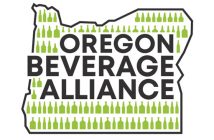(Photo | Pexels)
The April 20 edition of Cascade Business News focuses on real estate and in keeping with the theme, I’m sharing some thoughts around the intersection of real estate and family business.
Most Businesses Are Family Owned
Family-owned businesses, like any other, identify themselves based on their offering. The range is wide and spanning across industry lines, everything from dog grooming services to injection-mold-parts manufacturing. The family business’s identity is grounded in the work they do and their presence in the marketplace. Yet, despite this diversity, many have one thing in common; they also hold real estate.
Investing in real estate is the logical direction for a profitable operation. As businesses are established, if they are lucky enough to flourish, they often choose to invest in real estate, and generally start out by buying or building the facility in which they operate.
Expanding into Real Estate Holdings
At first, purchasing real estate is a business decision that simply makes sense. But as time passes and the value of the property appreciates, its significance on the balance sheet often rivals, or even usurps, that of the original business it was intended to support. That’s the point at which the family business shifts from simply a service or manufacturing business to a real estate investment business as well.
Appreciation on paper is generally great news, but it complicates the family business scenario regarding business structure, ownership and estate planning. Additionally, it not uncommon theme for the underlying asset to be overlooked, taken for granted-because it is viewed as an accessory, not the main business. Here are some examples from my family business coaching experience.
Physical Plant and Its Management
A recent client from another state owned a 40,000 square foot manufacturing facility. Their physical plant had a complex HVAC systems and flat roofs in a severe climate that required proactive maintenance. The manufacturing operations depended on the building being safe and operable, roof leaks could shut down production. Yet, the job of physical plant maintenance was passed around the family business members like a hot potato. No one wanted the job.
That’s understandable because maintaining a building is neither easy nor glamorous. But as a result, their operations were sometimes interrupted, impacting their bottom line. In addition, the eventual cost of building will repair will outweigh the cost regular proactive maintenance would have. The moral of the story is that building management is critical and ideally done by someone who understands structures and property maintenance. If no one inside the family is a good fit for the job, consider adding an employee or contractor to carry the responsibility.
Rental Property Management
In another case, the primary business was throwing sizeable profits each month and the leading gen chose to invest those profits in residential real estate. A decision made solo, without the input from the next gen. The properties were not selected based on any particularly thoughtful criteria or long ranging strategy. As the real estate portfolio grew and the properties aged, they required more and more attention, both in maintenance and management. When stacked on top of their primary business, it was more than the family could handle and caused much stress on an already burdened family system.
Capital Asset Management
Lastly, it’s a scenario you see in the farming and ranching industry, the crop or cattle operation is highly capital and labor intensive yet often barely profitable; the real value is in the land. In these situations, it’s very important that the holding structure is set up with estate planning and succession in mind. When the site lends itself to other uses, perhaps development for recreational use or housing, the legacy’s value shifts away from ranching or farming to the property. The complex and daunting task of creating a vehicle by which ownership will be transmitted from one generation to the next is key.
These may seem like obvious scenarios and that the family business leader would make decisions that lead to the best outcomes. But usually, family business leaders are so entrenched in their day-to-day operations and so overwhelmed with complex family dynamics that they give these “bigger picture” considerations little attention.
That’s understandable because this shift is an invisible one, happening behind the scenes on paper while the primary operation requires the day-to-day attention and management, so it is often goes unacknowledged. Maybe that doesn’t matter until it’s time for family business succession or the selling of the family business
Another reason it’s overlooked is because the family business leader may struggle to shift their identify from being a service or manufacturing business leader to real estate business leader. How does the leading gen view themselves? What is their identity based on? Being human, it’s a difficult transition to confidently wear another hat. Often, they cannot see themselves as landowners, landlords, investors, developers that they have unwittingly become. A shift in identity takes a lot of personal growth and attention.
Getting Clear on Complex Family Enterprises
When a family business becomes a family enterprise by expanding into real estate or other areas, there is a lot going on. One value of the family business coaching I do is to establish some organizational clarity. Simply untangling the web of inter-related businesses, finances, ownership, responsibilities and even vision for the future is a helpful practice. Getting a birds-eye view and an objective perspective can help move family business leaders from working in the business to working on the business.
If you are facing family business challenges, coaching can help. Reach out to me for a consult to discover how I can help, Angelika@angelikaolsen.com.





